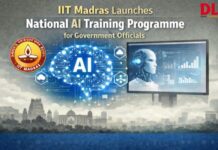The developmental process of designing meaningful multimedia e-learning materials whether they are to be delivered in the form of a CD-ROM or the Internet often need to be guided by educational theories (Norman and Spohrer, 1996; Mayer, 2001). Although designers of multimedia learning environments often have a lot of information, proven instructional methods and powerful multimedia systems, it is still a difficult task to produce effective multimedia learning materials for e-learning. This is more so especially due to a lack of effective yet practical pedagogical design model for selecting, organizing and designing multimedia materials for e-learning (Tsoi et al.1999; 2000). Hence, the following sections provide an insight on a onceptualized hybrid learning model, TSOI© model for multimedia e-learning design pedagogy
TSOI© model represents learning as a cognitive process in a cycle of four phases, namely, Translating; Sculpting; Operationalising; and Integrating. In the translating phase, multimedia experiences are translated into a beginning idea or concept to be further engaged in sculpting phase which involves logical chain of instructional events embedding episodes of thinking, guiding and reflecting leading to the identification of the attributes of the concept. The operationalising phase entails meaningful functionality for concept internalisation while the integrating phase provides the setting for diverse problem applications. Pedagogical principles of the TSOI© model are applied to science and chemical education. pedagogy.
Framework of TSOI© model The traditional model of ‘Transmit- Receive’ which when applied to multimedia learning, has so far failed to engage learners in meaningful learning (Scardamalia and Bereiter, 1993). In contrast, this hybrid learning model (Tsoi et al. 2003) for the design of multimedia aims not only to
enhance concept learning but also to cater to different learning styles. The theoretical basis of this hybrid learning model is derived from the Piagetian science learning cycle model and the Kolb’s experiential learning cycle model. The Piagetian science learning cycle model is an inquirybased student-centered learning cycle representing an inductive application of information processing models of teaching and learning. It has three phases in a cycle: exploration, concept invention and concept application (Karplus, 1977; Renner and Marek, 1990; Lawson, 1995). The exploration phase focuses on “what did you do?” while the concept invention phase centers on “What did you find out”. The third phase is for application of the concept acquired. The Kolb’s experiential learning cycle (1984) represents learning as a process in a cycle of four stages, namely, concrete experience, reflective observation, abstract conceptualization and active experimentation. The concrete experience stage focuses on “doing”. The reflective observation stage deals with “understanding the doing”. The abstract conceptualization stage focuses on “understanding” part while the active experimentation stage is about “doing the understanding”. Bostrom et al. (1990) also conclude that learning styles are an important factor in computer-based training and learning. Hence, a hybrid learning model is derived from a synthesis of both the Piagetian science learning cycle model and Kolb’s experiential learning cycle model. This hybrid
learning model termed the TSOI© model of learning represents learning Figure 2. Instructional storyboard for translating phase as a cognitive process in a ycle of four phases: Translating, Sculpting, Operationalizing, and Integrating.
Figure 1 shows the four phases of the TSOI© model of learning.
Pedagogical Design
Application For illustration, in science and chemical education, the mole concept, a difficult concept which is abstract in nature is used (Tsoi et al. 1998). The subtopic 1 is relative atomic/molecular mass, Avogadro’s number and Mole. In the translating phase, the activity explores the relationship between mass and number of particles. The multimedia experiences are translated into a beginning idea or concept of what is mass ratio which is needed to understand Avogadro’s number an Mole in the next phase, the sculpting phase. Figure 2 illustrates in the form of instructional storyboarding the activity for the learner to go through in the translating phase. At the end of the activity, the learner will have a beginning idea or concept of mass ratio as a relationship between total
mass and equal number of particles through discovery and that this is help in the understanding of relative atomic mass and Avogadro’s number. In the sculpting phase, the activities take place as a chain of logical events of content sequencing, learner guiding and reflecting as shown in Figures 3 and 4 as instructional toryboarding. One of the activities on “physical meaning” at a microscopic (particle) level involves the learner comparing the masses of various atoms that have annotations to go with it. The various atoms are displayed with the appropriate colour and size. This is essential to enhance the first activity on finding out how heavy is a single atom of carbon leading to the idea that the actual mass of an atom is very small and hence, the need to compare masses of different atoms with each other including mass ratio. Activities as shown in Figure 3 will ead to the fundamental concept that relative atomic mass is a number used o compare the masses of different atoms and it has no units. The learner is provided the opportunity to be engaged in the thinking process of using the given information to create a relative atomic mass scale. The instructional storyboarding illustrates a way for infusing thinking skills in the activity and consolidating the understanding of the physical meaning of Avogadro’s number and Mole as well as their relationship
both qualitative and quantitative before proceeding to the third phase, the operationalising phase which is important for concept formation. The beginning activity focuses on the physical meaning of Avogadro’s number and mole in which the learner chooses a mole of atoms of an element from the periodic table and balances it with the correct number of particles. This is then repeated with a different element. The element when dragged onto the balance is represented appropriately at room temperature and pressures either in its solid state or if in its gaseous state, it will be in the form of a balloon as well as in its chemical formula or symbol including the molar mass. In this way of representation, a macroscopic as well as a symbolic view is provided. Quantitative relationships in the form of mathematical formula are acquired through relevant activities to allow operability of the mole at the three levels, namely, the macroscopic, microscopic and symbolic. Besides, self-questioning is embedded and the use of conversational style as in the personalisation principle is also applied. Generic questions such as, “How do you do it?”, “How are the observations in this activity alike?”, are provided where appropriate for
self-questioning. In the integrating phase, relevant and diverse problems are provided. The learner is posed review questions such as “What have you learnt
regarding one mole and number of particles?” and “How is the mass of ubstance connected to the mole?”. he translating phase is similar to exploration phase of science learning cycle model and concrete experience stage of experiential learning cycle. Misconceptions can also be confronted in the Sculpting phase which is similar to concept invention phase of science learning cycle model and reflective observation stage of the experiential learning cycle. The operationalising phase involves increasing the understandings of the relationship between thinking and concept acquisition. This phase is similar to the abstract conceptualisation stage of the experiential
learning cycle and prepares the learner to be operationally ready for applications in the integrating phase. The integrating phase gives the learner the opportunity to solve diverse problems and thus integrate concepts previously acquired
























